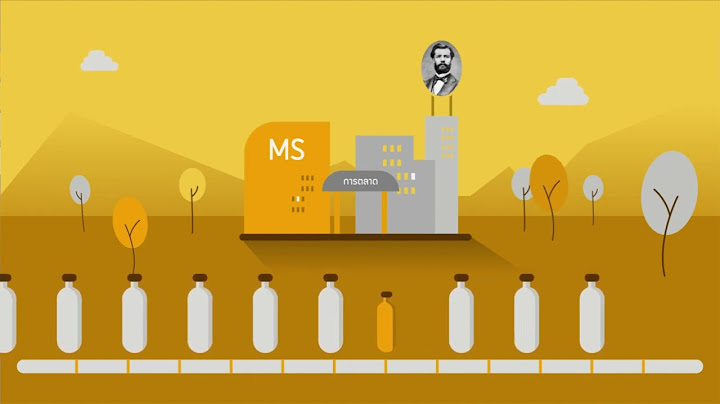การออกแบบมีอยู่ในทุกอย่างไม่ว่าจะเป็นการออกแบบสินค้า บริการ หรือซอฟต์แวร์ต่างๆ เราไม่ได้ออกแบบแค่ให้ใช้งานได้เท่านั้น แต่ต้องมีมาตรฐานในการออกแบบ เพื่อสร้างประสบการณ์ความพึงพอใจให้กับลูกค้าให้กลับมาใช้งานใหม่อีกครั้ง ประโยชน์ของการออกแบบแบ่งได้ 2 กลุ่มคือ Show
ทั้ง 2 กลุ่มเป็นสิ่งที่คู่กัน เพราะถ้าเราออกแบบ UX/UI แล้ว ผู้ใช้งานสามารถใช้งานได้อย่างถูกต้องและเกิดความพึงพอใจ จะถือว่าเราประสบความสำเร็จกับการออกแบบ ผลกระทบที่ผู้ใช้ได้รับ กรณีออกแบบ UX/UI ได้ไม่ดีพอ
ดังนั้นเราจึงควรใส่ใจกับการออกแบบ เพื่อสร้างกระบวนการที่ถูกต้อง เข้าใจง่าย นำมาซึ่งความพึงพอใจและความประทับใจของผู้ใช้งาน User experience (UX) design is the process design teams use to create products that provide meaningful and relevant experiences to users. UX design involves the design of the entire process of acquiring and integrating the product, including aspects of branding, design, usability and function. Designing an experience includes not only making the software easy to use but also designing the other experiences related to the product, for example, the marketing campaign, the packaging and after-sales support. Most importantly, UX design is concerned with delivering solutions that address pain points and needs. After all, no one will use a product that serves no purpose. What UX Designers Do Goes Beyond UI Design“User Experience Design” is often used interchangeably with terms such as “User Interface Design” and “Usability.” However, while usability and user interface (UI) design are important aspects of UX design, they are subsets of it. A UX designer is concerned with the entire process of acquiring and integrating a product, including aspects of branding, design, usability and function. It’s a story that begins before the device is even in the user’s hands.
Products that provide a great user experience (e.g., the iPhone) are thus designed with the product’s consumption or use in mind and the entire process of acquiring, owning and even troubleshooting it. Similarly, UX designers don’t just focus on creating usable products; they concentrate on other aspects of the user experience, such as pleasure, efficiency and fun. Consequently, there is no single definition of a good user experience. Instead, a good user experience meets a particular user’s needs in the specific context where they use the product. A UX designer attempts to answer the question: "How can we make the experience of interacting with a computer, a smartphone, a product, or a service as intuitive, smooth and pleasant as possible?" UX Design—A Formal DefinitionThe International Organization for Standardization (ISO) defines user experience as:
We can break this definition into two parts:
In user experience, designers do not have much control over a person’s perceptions and responses—the first part of the definition. For example, they cannot control how someone feels, moves their fingers or controls their eyes as they use a product. However, designers can control how the product, system or service behaves and looks—the second part of the definition.
The simplest way to think about user experience design is as a verb and a noun. A UX designer designs (verb)—ideates, plans, changes—the things that affect the user experience (noun)—perceptions and responses to a system or service. The simplest way to think about user experience design is as a verb and a noun. © Christian Briggs and Interaction Design Foundation, CC BY-SA 3.0For example, when using a physical device, such as a computer mouse, we can control some aspects of the product that influence whether the user enjoys looking at, feeling and holding it:
When a person uses a digital product, such as a computer application, a few aspects that we can influence include:
UX Designers Consider the Why, What, and How of Product UseAs a UX designer, you should consider the Why, What and How of product use. The Why involves the users’ motivations for adopting a product, whether they relate to a task they wish to perform with it or to values and views that users associate with the ownership and use of the product. The What addresses the things people can do with a product—its functionality. Finally, the How relates to the design of functionality in an accessible and aesthetically pleasant way. UX designers start with the Why before determining the What and then, finally, the How to create products that users can form meaningful experiences with. In software designs, you must ensure the product’s “substance” comes through an existing device and offers a seamless, fluid experience. UX Design is User-CenteredSince UX design encompasses the entire user journey, it’s a multidisciplinary field–UX designers come from various backgrounds such as visual design, programming, psychology and interaction design. To design for human users also means working with a heightened scope regarding accessibility and accommodating many potential users’ physical limitations, such as reading small text. A UX designer’s typical tasks vary but often include user research, creating personas, designing wireframes and interactive prototypes, and testing designs. These tasks can vary significantly from one organization to the next. Still, they always demand designers to be the users’ advocates and keep their needs at the center of all design and development efforts. That’s also why most UX designers work in some form of user-centered work process and keep channeling their best-informed efforts until they address all of the relevant issues and user needs optimally. User-centered design is an iterative process where you take an understanding of the users and their context as a starting point for all design and development. Learn More about UX DesignYou can read and watch more about UX design from the inventor of the term, Don Norman, on the Nielsen Norman Group website. Learn about UX design by reading the insightful, funny and inspiring material about UX on Medium.com. If you want to start learning how to work in UX Design now, the Interaction Design Foundation’s online courses are a great place to begin. Element ของ User Experience มีกี่ส่วน 4 ส่วนจุดหมายของกลยุทธ์ UX ที่สำคัญที่สุดคือการเอาชนะ disruption เราจำเป็นต้องมีกรอบการทำงานในการเชื่อมต่อจุดต่าง ๆ ทั้งหมดเพื่อให้ได้มาซึ่ง กลยุทธ์ Ux ที่เหนียวแน่น จริงๆแล้ว UX Strategy ประกอบด้วย 4 ส่วนคือ Business Strategy ,Value Innovation ,Validated User Research ,Killer UX Design.
UX Design มีองค์ประกอบอะไรบ้างบทสรุปของ User Experience Design (UXD)
อันจะประกอบไปด้วยมิติต่างๆ ทั้ง Visual Design, Usability, Interaction Design และ Accessibility เพื่อช่วยให้ผู้ใช้งานสามารถใช้งานของเราได้อย่าง เข้าถึงได้ มีประสบการณ์ที่ดีในการใช้งาน กับระบบ บริการ หรือผลิตภัณฑ์ต่างๆ ที่มีการออกแบบที่ให้ความสำคัญของ User Experience Design (UXD)
User experience (UX) คือข้อใดUX ย่อมาจาก User Experience หรือก็คือ "ประสบการณ์ของผู้ใช้งาน" มนุษย์ทุกคนต่างมีความรู้สึกที่ตอบสนองต่อการใช้งานบางอย่าง ไม่ว่าจะเป็นผลิตภัณฑ์หรือแพลตฟอร์มเว็บไซต์ต่างๆ ตัวอย่างเช่น โกรธ, สนุกสนาน, มีความสุข, เครียด, พึงพอใจ ฯลฯ ความรู้สึกเหล่านี้มักเกิดขึ้นหลังจากการใช้งานบางอย่างเสมอ
UX Design ทำอะไรบ้างหน้าที่หลัก ๆ ของ UX Design จะทำงานเกี่ยวกับการค้นคว้าหาข้อมูล ทำความเข้าใจถึงความต้องการของผู้ใช้งาน เพื่อให้ทราบถึงปัญหาของผู้ใช้งาน เฟ้นหาไอเดียที่จะสร้างสรรค์ ออกแบบสินค้าและบริการให้ตรงความต้องการผู้ใช้มากที่สุด ซึ่งหน้าที่หลัก ๆ ของ UX Design มีดังนี้ คือ รวบรวมข้อมูลเกี่ยวกับผู้ใช้งาน รวมถึงทำการค้นคว้า ออกแบบ ...
|

กระทู้ที่เกี่ยวข้อง
การโฆษณา
ข่าวล่าสุด
การโฆษณา
ผู้มีอำนาจ
การโฆษณา
ถูกกฎหมาย
ช่วย

ลิขสิทธิ์ © 2024 th.paraquee Inc.




























